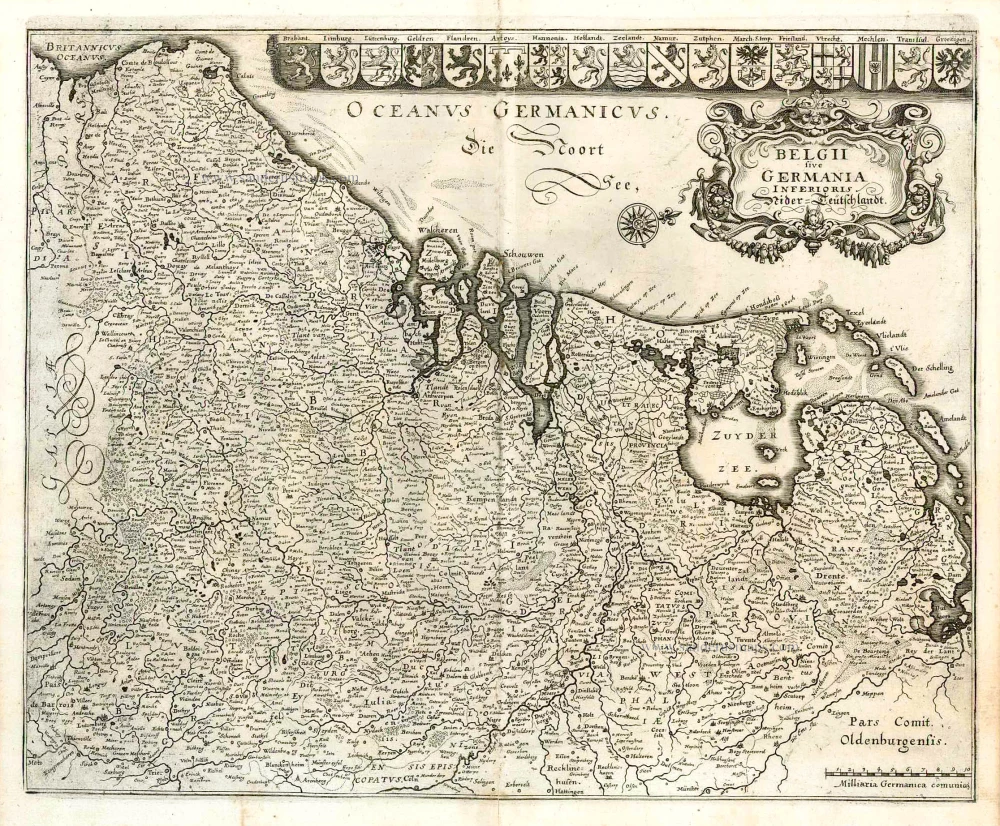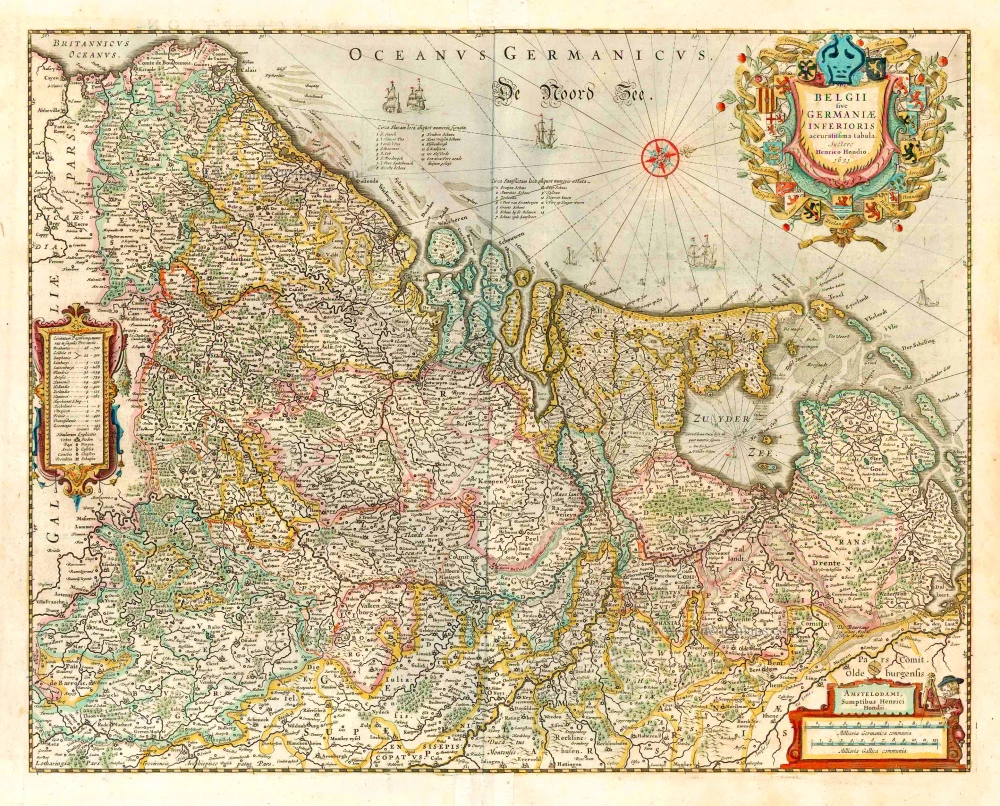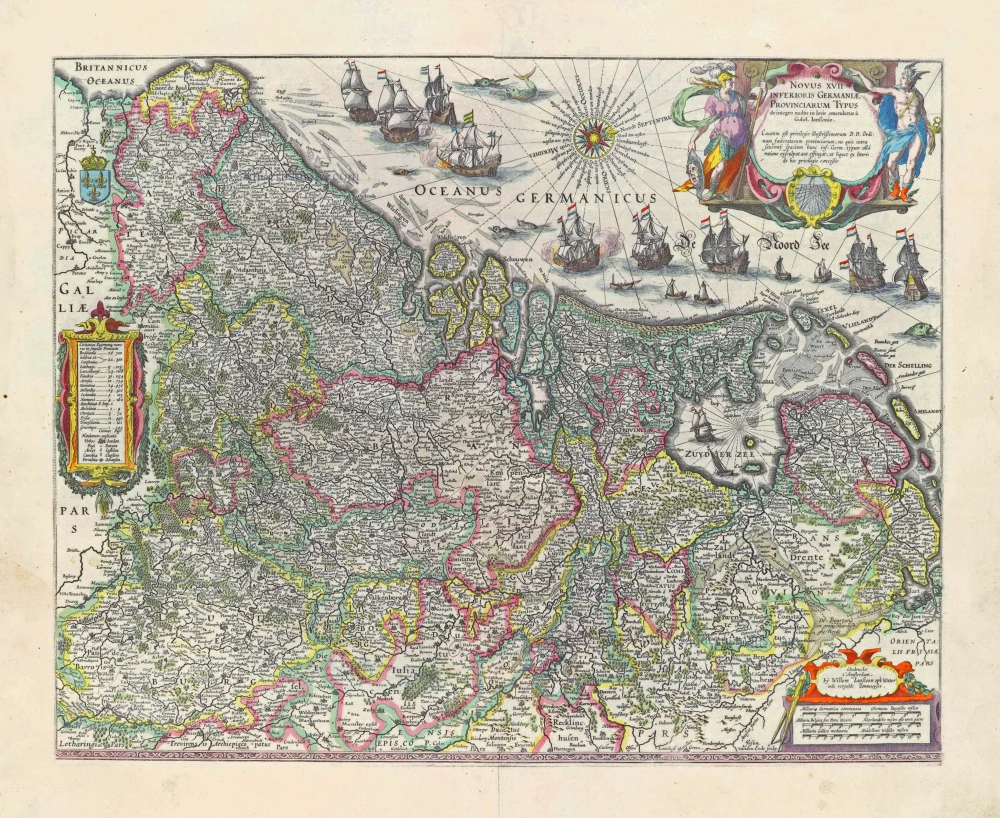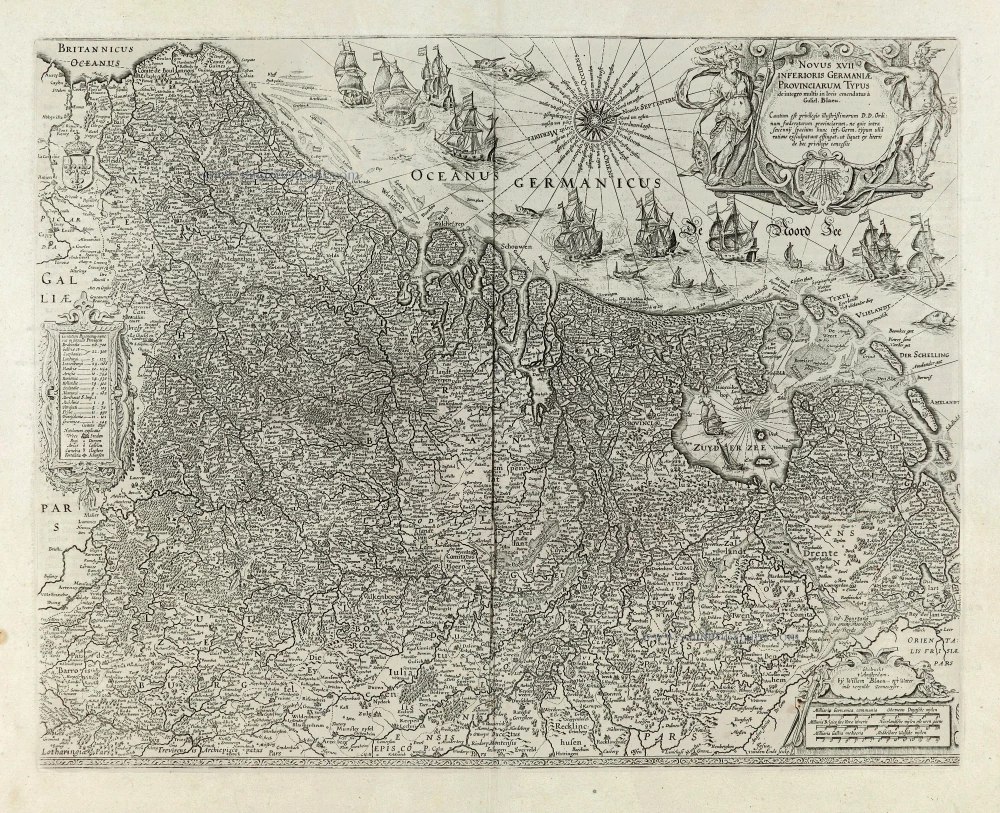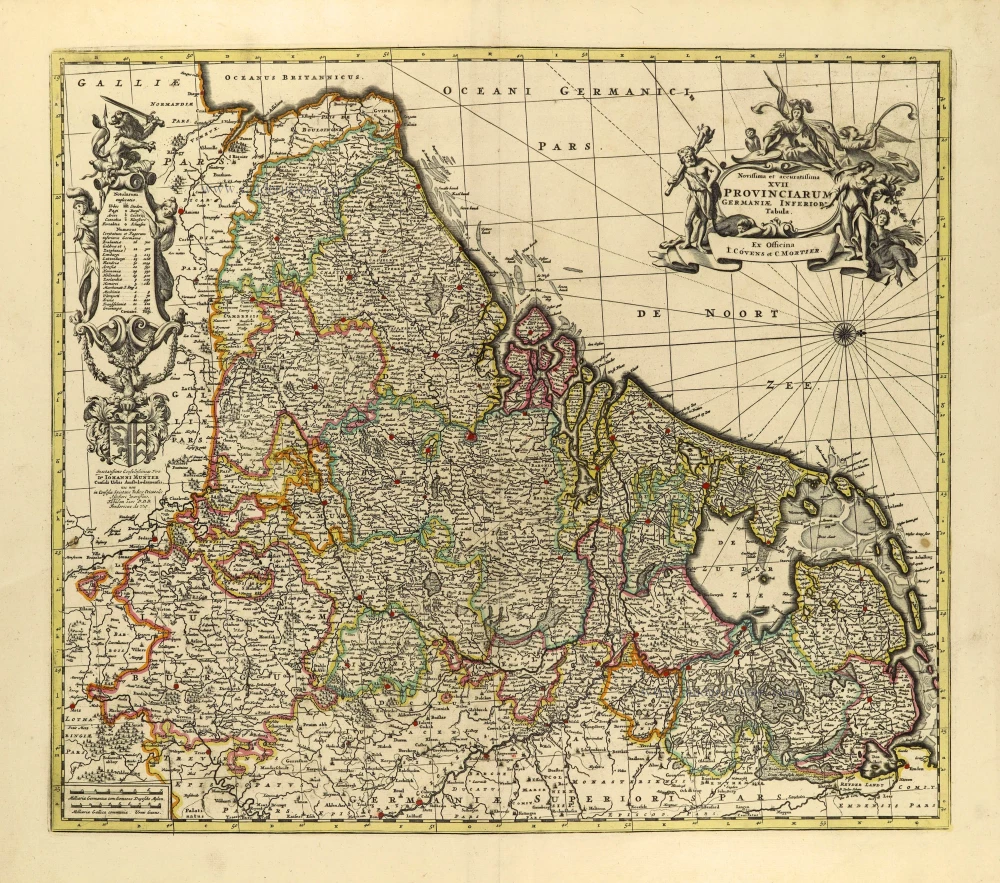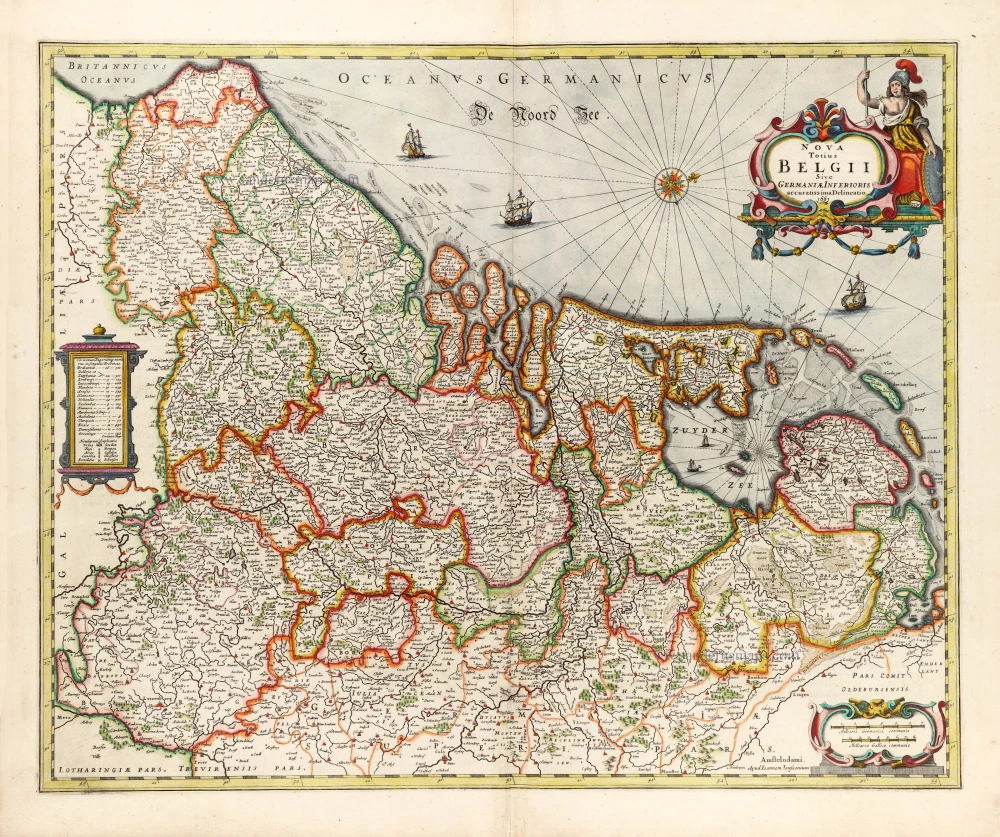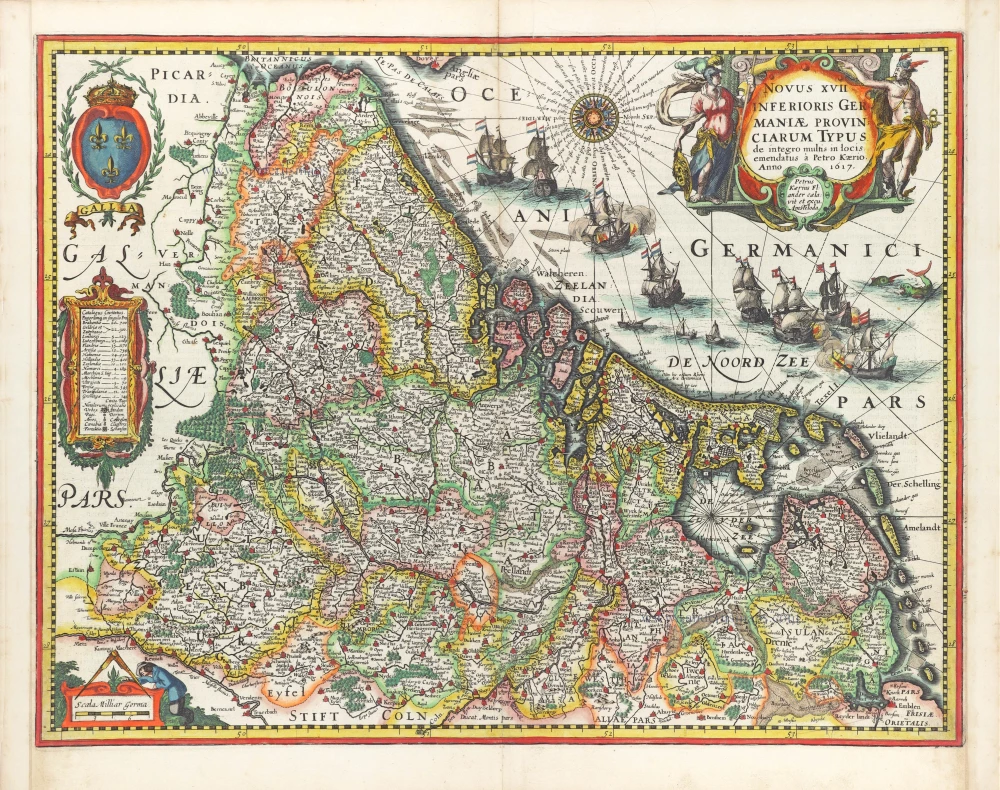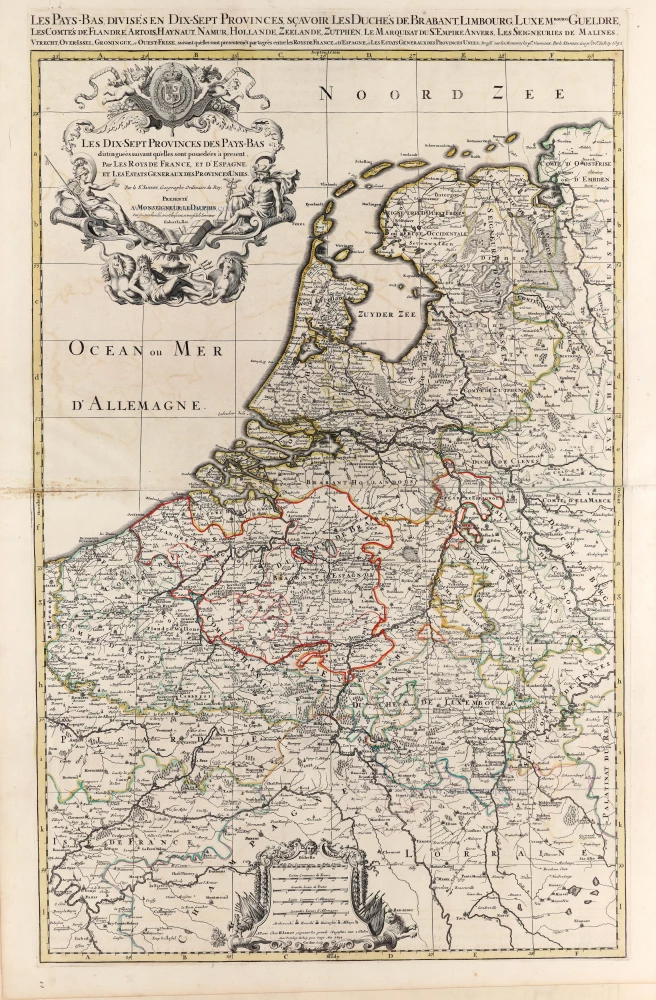The 17 Provinces, by Giovanni Magini. 1594
Magini Giovanni Antonio (1555-1617)
Giovanni Antonio Magini was an Italian astronomer, astrologer, cartographer, and mathematician. He was born in Padua and completed his philosophy studies in Bologna in 1579. In 1588, he was chosen over Galileo Galilei to occupy the chair of mathematics position at the University of Bologna. He was in contact with many well-known figures of his day, including Ortelius, Tycho Brahe, Galileo and Johannes Kepler.
Magini supported a geocentric system of the world in preference to Copernicus's heliocentric system. Magini devised his planetary theory in preference to other existing ones. The Maginian System consisted of eleven rotating spheres, which he described in his Novæ Cœlestium orbium theoricæ congruentes cum observationibus N. Copernici (Venice, 1589). His most important work was the first printed atlas of Italy, published posthumously by his son Fabio.
He died in Bologna on 11 February 1617.
Belgium seu Germania Inferior.
Item Number: 28914 Authenticity Guarantee
Category: Antique maps > Europe > The Low Countries
Old antique map of the 17 Provinces, by Giovanni Magini.
Title: Belgium seu Germania Inferior.
Oriented to the northwest.
Engraver: Gironimus Porro.
Date of the first edition: 1594.
Date of this map: 1594.
Copper engraving, printed on paper.
Map size: 130 x 175mm (5.12 x 6.89 inches).
Sheet size: 155 x 220mm (6.1 x 8.66 inches).
Verso: Latin text.
Condition: Hand coloured, excellent.
Condition Rating: A+.
From: Geographicae Universae tum veteris novae . . . Auctore Jo. Ant. Magino Patavino. Venetia: Apud haeredes Simonis di Karera, 1594. First Magini-edition of the Geografia of Ptolemaeus.
Magini Giovanni Antonio (1555-1617)
Giovanni Antonio Magini was an Italian astronomer, astrologer, cartographer, and mathematician. He was born in Padua and completed his philosophy studies in Bologna in 1579. In 1588, he was chosen over Galileo Galilei to occupy the chair of mathematics position at the University of Bologna. He was in contact with many well-known figures of his day, including Ortelius, Tycho Brahe, Galileo and Johannes Kepler.
Magini supported a geocentric system of the world in preference to Copernicus's heliocentric system. Magini devised his planetary theory in preference to other existing ones. The Maginian System consisted of eleven rotating spheres, which he described in his Novæ Cœlestium orbium theoricæ congruentes cum observationibus N. Copernici (Venice, 1589). His most important work was the first printed atlas of Italy, published posthumously by his son Fabio.
He died in Bologna on 11 February 1617.



